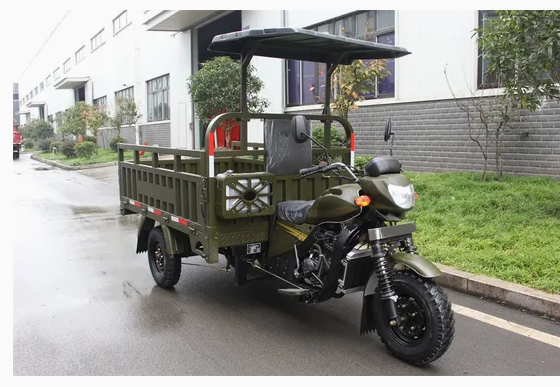Key Factors Boosting Global E-Cargo Market!
News 2022-06-14
What are the key factors driving the growth of the Global Electric Cargo Three Wheeler Market?
The growth of the global electric cargo three wheeler market is primarily attributed to the rising demand for sustainable and cost-effective last-mile delivery solutions, increasing environmental concerns, government regulations supporting the adoption of electric vehicles, and technological advancements in battery and motor systems.

On the crowded streets of Mumbai, Anil maneuvers a sky-blue electric three-wheeler with remarkable agility. This “iron camel” capable of carrying 800kg saves his logistics company 42% in daily transportation costs, its solar panels having harvested enough energy before the monsoon season. This microcosm reflects the profound logic behind the global electric cargo three-wheeler market’s 18.7% annual growth.
Policy support acts as nutrient-rich soil for market cultivation. Under India’s FAME-II program, each electric three-wheeler purchase receives “green allowance” directly driving a 67% sales surge in 2022. In Hanoi, municipal authorities have established diesel vehicle exclusion zones in old quarters, indirectly creating a 200,000-order daily delivery market for electric alternatives. The EU’s latest carbon emission trading system converts each electric three-wheeler into 0.3 carbon credits, a monetization mechanism prompting TNT Express to replace 300 traditional vehicles in Amsterdam’s port area.
Technological breakthroughs are redrawing product value curves. CATL’s lithium iron phosphate batteries maintain 85% discharge efficiency at -20°C, this “cold-weather awakening” technology enabling fresh food distributors in Northeast China to extend winter operation radius to 150km. Euler Motors’ detachable battery system transforms cargo platforms into mobile charging stations, boosting Delhi couriers’ daily orders by 40%. Mexico’s modular chassis design, allowing Lego-like customization of cargo configurations, has secured 5,000-unit orders from Amazon Latin America.
Cost efficiency builds Bangkok, electric three-wheelers operate at $0.02 per kilometer, 58% cheaper than diesel vehicles. Kenyan agricultural dealers discover maintenance intervals triple that of combustion engines, saving annual repair costs equivalent to two months’ profits. Tata Group’s battery-sharing network, accessible via app within 5km radius, slashes purchase costs by 35% through its “battery-as-a-service” model.
Market demand exhibits multi-stage rocket growth. Southeast Asian e-commerce platform Lazada’s “next-day delivery” service has generated demand for 12,000 electric three-wheelers, these “lightning ants” completing 150,000 last-mile deliveries daily across Kuala Lumpur. Africa’s solar-powered three-wheelers from Nigerian startup MAX serve 35,000 merchants through rental models, increasing user income by $120 monthly. In Europe, IKEA’s adoption of electric three-wheelers reduced customer complaints by 27%, transforming eco-delivery into brand equity.
Infrastructure capillaries continue extending. 12% of China’s 430,000 public charging stations specifically accommodate cargo three-wheelers installs battery swap stations every 50km along national highways. Indonesian tech companies deploy “power bank trucks” that rescue stranded vehicles via mobile app dispatch in Jakarta’s traffic jams.
In this green transportation revolution, entrepreneurial innovation constantly redefines possibilities. German AI scheduling systems improve fleet efficiency by 30%, Brazilian rooftop vegetable racks create auxiliary income streams, while Chinese autonomous three-wheelers achieve fully unmanned delivery in Hangzhou’s tech hub. These innovations act as precision gears propelling the market toward its $20 billion destiny.
As sunset gilds Dhaka’s electric three-wheeler caravans, their cargo beds carry not just goods but global determination for sustainable logistics transformation. This seemingly humble vehicle is forging the future of urban freight revolution with its steel frame.



